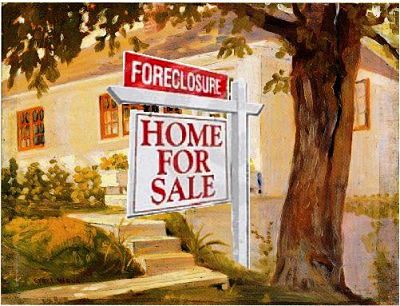Photo Credit: Mike Licht
Old delinquent loans hammer October’s numbers
RealtyTrac reported that October foreclosure activity shot up 15 percent from the month before, the largest increase in four years. Nearly 60,000 homes were newly scheduled for auction in October, this increase was far more than the usual seasonal rush to get foreclosures completed before the holidays. In Oregon, there was a 399 percent increase in the number of auctions. Institutional investors continue to have a strong demand for these properties and with sales prices increasing, it’s become cost-effective to sell these homes. Daren Blomquist, Vice President of RealtyTrac said, “Distressed properties that have been in a holding pattern for years are finally being cleared for landing at the foreclosure auction.”
Are we headed back into dark days when the housing market was powered mostly by property auction sales? While there was an increase in October, RealtyTrac’s data also show that foreclosure activity is down 8 percent on a year-over-year basis. This is a continuation of a trend that started in late 2010.
Parsing the foreclosure numbers to analyze what actually caused the big spike, one will see that the increase was caused almost entirely by properties entering the final stages of foreclosure. Repossessions were up 22 percent compared to September, but were down from October 2013. The number of properties scheduled for foreclosure auctions increased 24 percent from September and up from 2013; but foreclosure starts, which is more indicative of a new trend of activity, were down.
Both areas of foreclosure activity which contributed to the October spike, do not represent new foreclosures. Most of these loans are in the later stages of the foreclosure process and have been in the system for some time. Over 78 percent of all loans in foreclosure were originated in 2008 or earlier, according to RealtyTrac. What we’re seeing are the extremely delinquent loans which should have been foreclosed on years ago. In most cases, these are the loans on which borrowers haven’t made a single payment on in three or more years.
Would an increase of loans going to auction or being foreclosed on still be an indication of a weak housing market? With home price appreciation over the years reducing the losses from selling properties at a foreclosure auction, we’re seeing more auctions and fewer short sales. Low end inventory is insufficient, which makes it possible to sell REO homes as soon as they’re made available. So we’re seeing more repossessions and robust marketing of these properties in a short period of time.
RealtyTrac data have shown year over year foreclosure activity declines for several years, there’s no rational or objective way to support the idea that we’re experiencing or should expect another wave of foreclosure activity. According to TransUnion, mortgage delinquencies have dropped over 17 percent from 2013’s numbers. The Mortgage Bankers Association (MBA) said in its recent third quarter National Delinquency Survey, noted that delinquency rates are the lowest since fourth quarter of 2007, and foreclosure starts are at the lowest level in eight years.
While foreclosure rates are about half of what they were during the peak of the housing crisis, they are still twice what they would be in a normal market. The market may see a steeper decline in foreclosure rates once the backlog of seriously delinquent and aged loans work way through the system.
Resources:
HousingWire. Stop panicking about recent foreclosure numbers
Salon. “An ongoing criminal enterprise”: Why America’s housing disaster is back and wreaking terror


